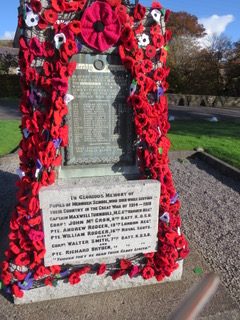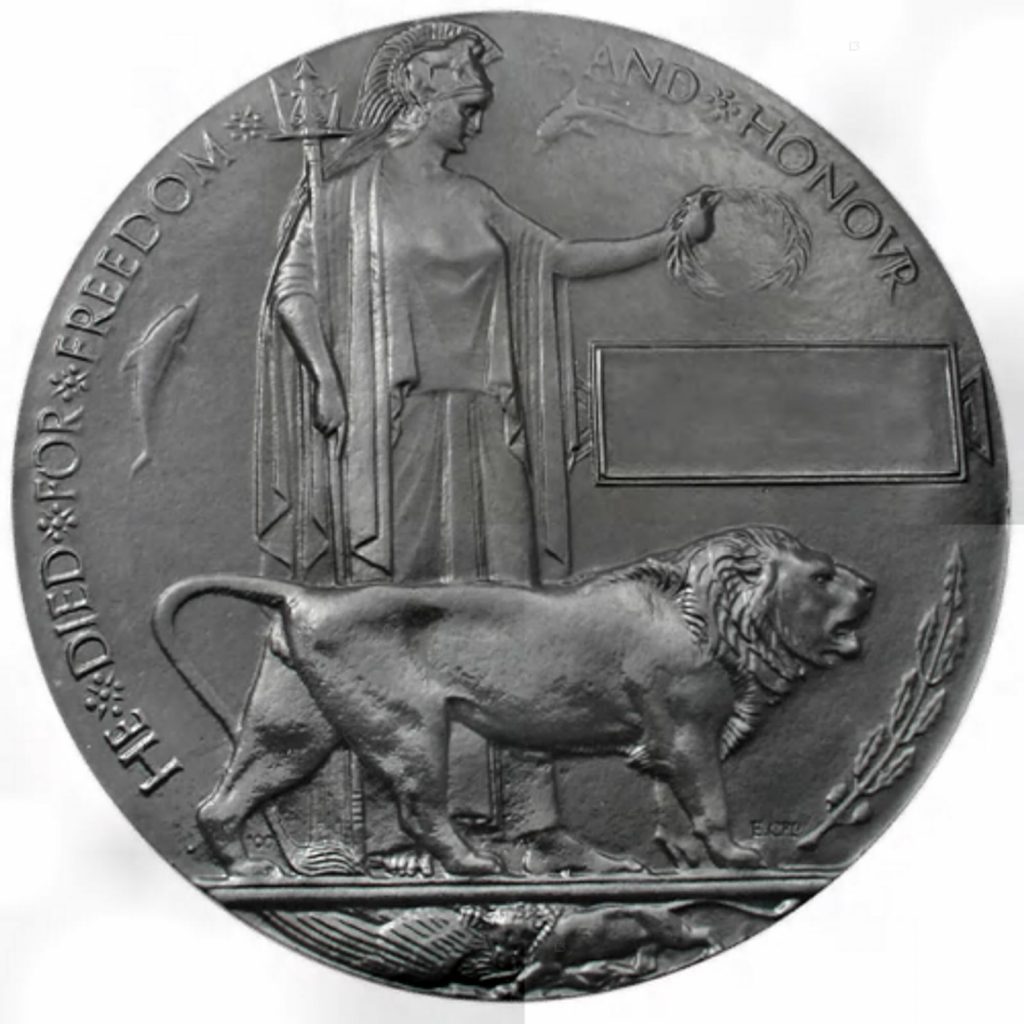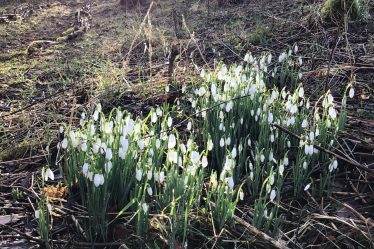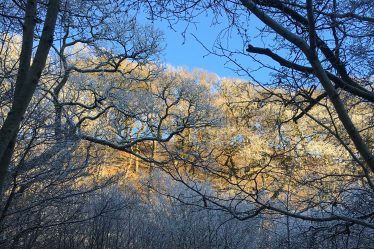

As we approach Rememberance Sunday, we thought we would tell you about two young men who lived at Mennock Pass Cottage and whose names appear on the Mennock War memorial. As mentioned in a previous posting, before it was named Mennock Pass Cottage it had been previously known as Dalpeddar Cottage. In WW1 23 men left Mennock, never to return.
On the 2nd February 1915 the Daily Record had the headline ‘BRITAIN’S BRAVEST VILLAGE MEMORIAL CROSS OFFERED FOR PATRIOTISM’. Britain’s bravest village is to be given the recognition it deserves. To the village which has sent the greatest percentage of its population to in the war. “The Weekly Despatch” London, offers a magnificent Memorial Cross. The Cross been designed by Mr George Framplon, the famous sculptor. It will be of Aberdeen grey granite (provided by the Aberdeen Granite Association) and will be erected at the village cross roads, there for all time to record how small village became great and how its inhabitants achieved glory.
The Dumfries and Galloway Standard reported on 18 February 1922- ‘The Bravest Village’ the village of Mennock was awarded 2nd place in the ‘Weekly Despatch’ bravest village competition and has now been presented with a magificant bronze tablet, set in a polished alabaster slab, and bearing the names of those who answered Lord Kitchener’s call to arms during the first six months of the war. The tablet is the gift presented by Messrs H.B. Sale, Ltd., bronze manufacturers, Birmingham. A committee has been appointed to make arrangements for the erection of the tablet in a suitable place in the village. Its acquistition was due to the untiring efforts of Mr. Walter Chusholm, who compiled the names, rank, and regiments of the village lads. The first place was gained by Knowlton, Kent, while the third went to the Orkney Islands.
The term Bravest Village made reference to the number of men who enlisted per head of population and in a small community such as Mennock, the loss of 17 young men was hugely felt.
On 28th September 1921 a further granite tablet listing a further six names of men who had also perished in the same conflict and who had been been pupils at Mennock School, was unveiled by Miss Simpson, the Headteacher of Mennock School and the memorial was dedicated by the Reverand David McQueen of the North United Free Church in Sanquhar.
Andrew and William Rodger were living at Dalpeddar Cottage when they signed up; although we haven’t yet traced William’s sign up papers, Andrew’s showed him to be a Blacksmith. Their mother Betsy was a widow.
William joined the 16th Battalion Royal Scots as a private, his regimental number being 51318 and of the two boys, he was the first to die on 16th April 1918, missing presumed dead. William was 19 years old. He is commemorated in Belgium at Ploegsteert Memorial, Panel 1.
Andrew joined the 19th Battalion (London) Middlesex Regiment as a private, his regimental number was 52864. His death is recorded as being barely months later on 1st September 1918, he was 20 years old. His records report him as missing presumed dead and he is commemorated in France at Vis-En-Artois Memorial, Panel 8-9.

Betsy Rodger received memorial death plaques similar to the one above for both her sons. By then she had left Dalpeddar Cottage and was living at 42 Carronbridge, Thornhill. Both boys posthumously received both the Victory and British War Medakls which would also have been sent to their mother along with the pay they had been owed.



